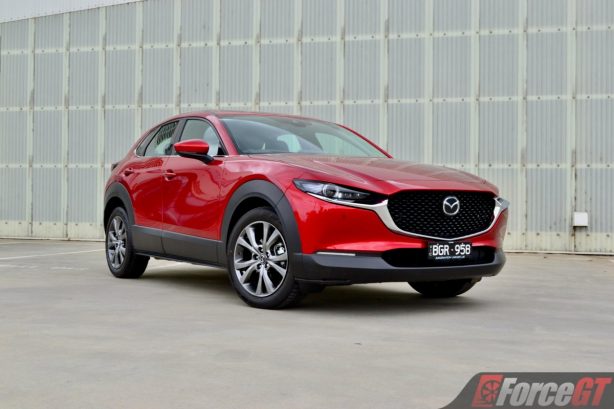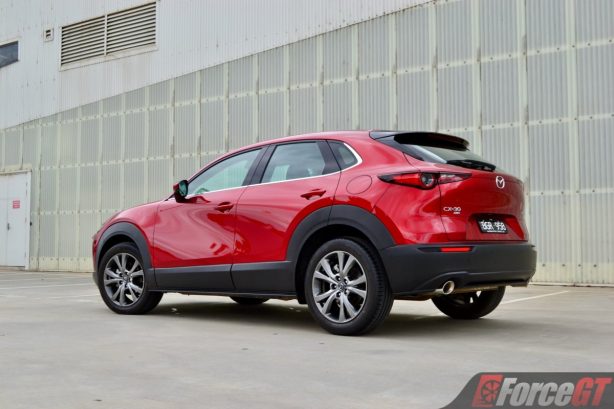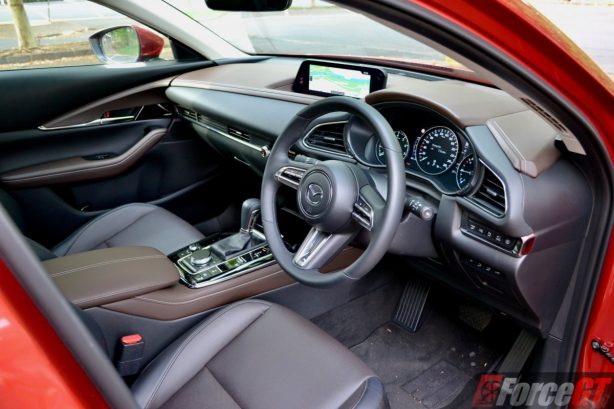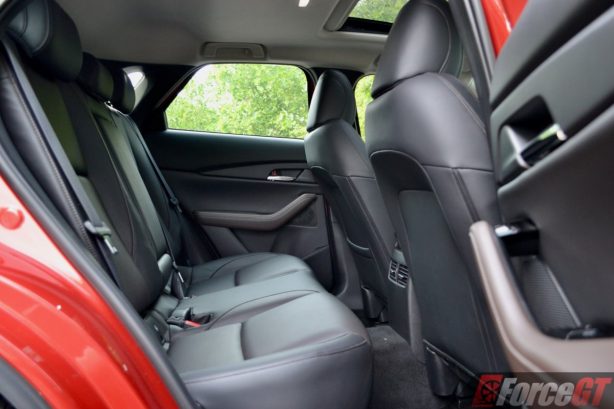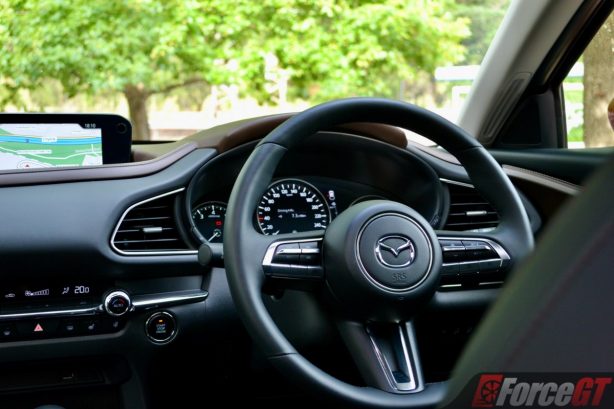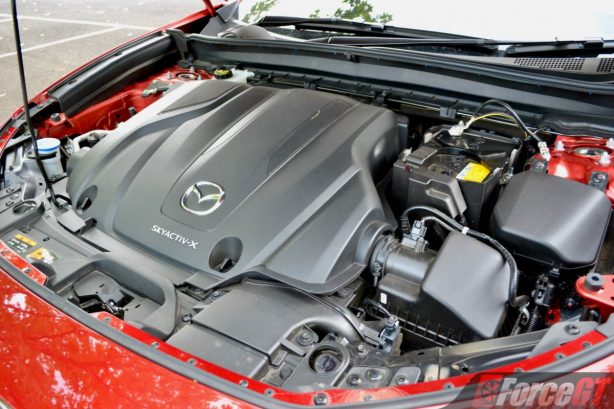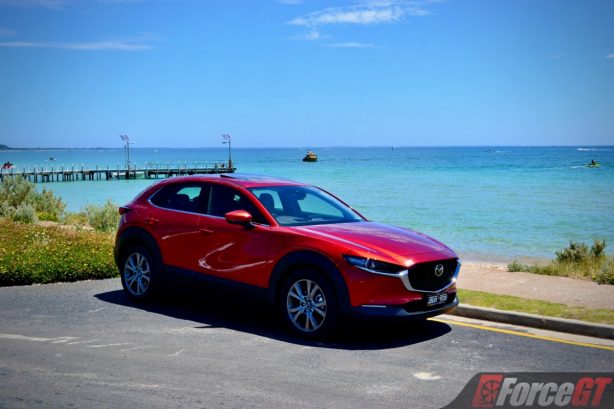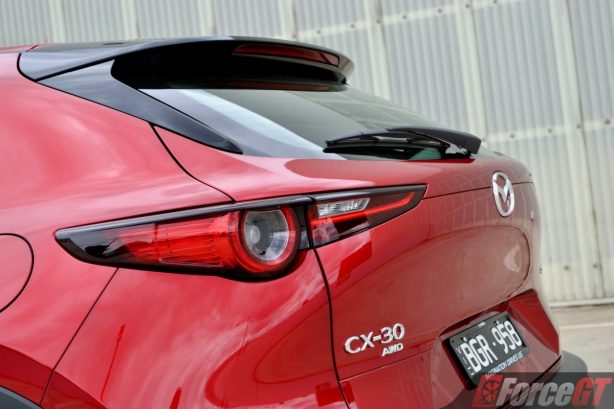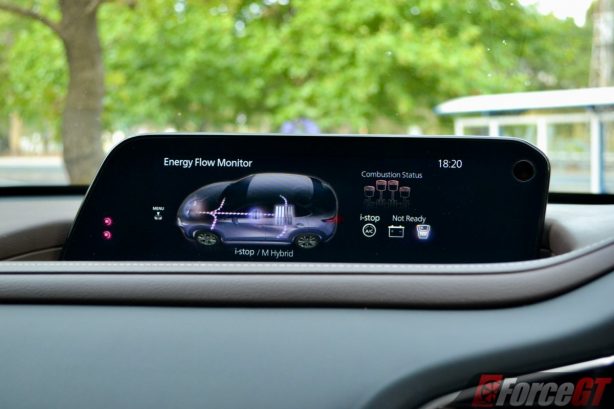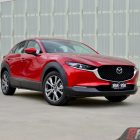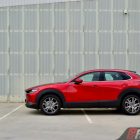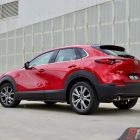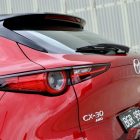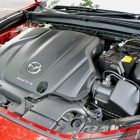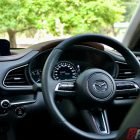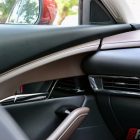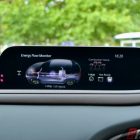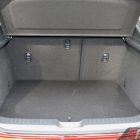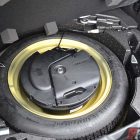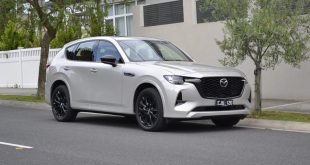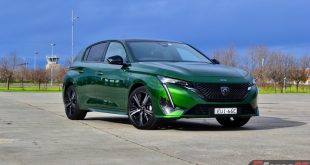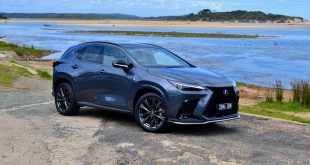The Mazda CX-30 is a unique proposition in the compact crossover segment. Offering the perfect blend of upscale design, sporty handling and up-to-date tech, it quickly became one of our favourite city-sized SUVs since launch.
With a total of 9 variants to choose from, the CX-30 range is also the most comprehensive amongst all its in-class rivals. The strictly petrol-powered CX-30 is available with a pair of normally aspirated 4-cylinder options, displacing 2.0 litres in the CX-30 G20 and 2.5 litres in the CX-30 G25. Both powertrains can be paired with either front or all-wheel drive. The third engine option is the 2.0-litre 4-cylinder mild hybrid unit with a unique Mazda technology called Spark Controlled Compression Ignition (SPCCI). Badged X20 and available only in range-topping Astina grade and all-wheel drive, this is the model that has everyone asking: “is it worth the premium and is it better than the conventional 2.5L petrol in the G25?”
We set out to answer just that in this review.
Priced at $46,490 plus on-road costs, the CX-30 X20 Astina fetches a $3,000 premium over an equivalent CX-30 G25 Astina. And the only hint of its mild electrification attribute is in the SkyActiv-X badging on the tailgate. It might as well, as the clean, classy and elegant design of the CX-30 requires no unnecessary differentiation and cluttering.
Being a top-spec Astina grade, the X20 rolls on 18-inch alloy wheels and features LED exterior lighting all-around. It also gets all the bells and whistles on the inside, including full leather seats and a sunroof. There are also head-up display (HUD), digital radio DAB+ and Bose premium audio with 12 speakers. Apple CarPlay and Android Auto connectivity is supported, though it still works through a USB port and not wireless yet.
Safety wise, the CX-30 X20 is comprehensively fitted with Lane Keep Assist, Automatic High Beam, Adaptive Cruise Control, Forward Collision Warning, Autonomous Emergency Braking, Blind Spot Monitor and Road Sign Assist, Rear Cross Traffic Alert and surround view camera.
Like the exterior, the interior of this electrified CX-30 oozes class and sophistication that you don’t see in the rest of the mainstream segment. Materials are first rate, with those gloss black trim on the door cards and centre console beautifully deep and rich (although a magnet for fingerprints), and the leather upholstery superbly fine and soft. The wide 8.8-inch infotainment screen with built-in satellite navigation dispenses high-definition graphics and is simple to operate using the rotary dial in the console. This is a cabin that won’t look out of place in a luxury car costing much more.
The X20 offers the same interior space as the rest of the range, which means front occupants enjoy generous head and legroom, and 3 adults could just fit across the back seats. That said, the tapered roofline does carve out a smaller than typical rear door aperture and taller passengers might also struggle for headroom at the back.
Further back, the boot space of 317 litres (422 litres with under-floor storage combined) is also identical to the other variants. It leans on the smaller side compared to roomier rivals like the Mitsubishi Eclipse Cross, Honda HR-V and Kia Seltos. Folding the rear seats expand the space out to 1,319 litres.
Enough of the nitty-gritty and now let’s talk about how the mild hybrid CX-30 drives. But first, what exactly is a mild hybrid and how does the Spark Controlled Compression Ignition (SPCCI) work?
Called the M Hybrid, Mazda’s mild hybrid system captures energy that is normally wasted during braking or coasting and stores it in a lithium-ion battery. The stored energy is then used to power electrical systems and assist the engine, saving fuel in the process. Unlike a plug-in hybrid, or a conventional hybrid, no plug or charging is required.
SPCCI is even more innovative. It uses diesel-style compression ignition on low loads such as idling, light acceleration or cruising, and seamlessly switches to conventional spark ignition on higher rpm and high loads.
Most of the fuel saving comes while the engine is running on compression ignition where a lean fuel-air mix is compressed to a ratio as high as 18.0:1 to initiate combustion without the use of spark plugs.
All in all, the 2.0-litre petrol engine in the CX-30 X20 produces 132kW @ 6,000rpm and 224Nm @ 3,000rpm. Compared with the 139kW/252Nm 2.5L engine in the G25, the X20 makes about the same power but trails in torque. Granted, peak torque in the X20 does arrive 1000rpm sooner.
The figures are quite impressive for an atmospheric 2.0L, and the tech sounds interesting. Well, it’s one thing in theory and on paper, and another in the real world. But we are glad to report that the SkyActix-X M Hybrid engine delivers most of what it claims. One thing that becomes immediately obvious when you drive the thing is how smooth, refined and quiet the engine is. On idle, you can barely tell if the engine is running. Such muted and vibration free is the engine that the only sign it’s running is the tachometer.
That said, the idle stop start feature shuts the engine most of the time while the car is stationary, with it only kept running when temperature is low or the battery needs a charge. The engine restart is the most seamless we have seen in this class, with hardly a jolt to be felt when it kicks back in.
Accelerating normally from standstill (in compression ignition), the feel is rather unique, like a cross between a laggy turbo engine and a lazy eco-focused hybrid. Below 2000rpm, torque feels a little lacking and more revs are always needed to get things moving. It’s not weak per se, but feels just slightly less linear in its power delivery.
This is a bit unusual because compression ignition like in a diesel engine normally gives strong low down torque, though most diesel engines are backed by a turbo. The M Hybrid doesn’t have a turbo.
Nevertheless, once you get past that initial ‘vacuum’, the M Hybrid feels great. There’s more than enough punch for most proceedings, and typical of Mazda engines, it loves to rev and makes a good note in the process. As you hit the higher rpms (from around 4500rpm depending on loads) the engine switches to spark ignition and you can’t even tell. The transition is so seamless that the only way to know what ignition mode the engine is currently using is by looking at the energy flow page in the infotainment screen.
Another trick the M Hybrid engine uses to save fuel is cylinder deactivation, which shuts down two of the four cylinders under low load condition to burn even less fuel. This tech also works discretely in the background without you noticing. Its operation is also detailed in the energy flow page.
Like the rest of the CX-30 range, the X20 features a six-speed automatic transmission that is smooth and pairs well with the M Hybrid engine.
Has all the added weight of a generator and larger battery, which makes the X20 some 50kg heavier than the G25 (1594kg vs 1544kg), diluted the sharp handling that the CX-30 is renown for? Not the slightest.
The X20 still offers brilliant poise and composure that are very hatchback-like. The steering is smooth, accurate and perfectly weighted, while the brakes, which unlike other regenerative types, still feel progressive and consistent.
Around town, the X20 rides just as smoothly as the other CX-30 variants and is one of the more comfortable crossovers in class. The cabin is also very well insulated from road noise. With the benefit of all-wheel drive, grip in wet conditions is assured.
Now, onto what must be the most important point of consideration – fuel economy. How much more efficient is the X20 compared to the G25?
Mazda claims the X20 will return 5.4L/100km in combined fuel consumption. Our weeklong test saw the trip computer sitting at 7.3L/100km with about 70 per cent city driving, plus some enthusiastic blasts through country back roads. In comparison, the G25 is rated at 6.8L/100km, with our previous G25 road test returning 7.9L/100km.
So, the X20 is no doubt more economical than the G25 out in the real world, though not by much. And it certainly can’t compare with a proper hybrid which mostly sips around 5.0L/100km.
Looking farther into its ownership, Mazda currently offers capped price servicing for its current range of vehicles with prices starting from $315 for the CX-30. However, Mazda generally requires their vehicles to visit the service centre every 10,000km or 12 months, whichever comes first, as opposed to 15,000km/12 months of most of its rivals.
Verdict
Design & Comfort
Performance & Handling
Quality
Economy
Equipment & Features
OUR SCORE
4.2/5
+ Plus
- Premium design inside and out
- Generous equipment
- Cabin refinement
- Cutting edge powertrain tech
– Minus
- Low down torque lacking
- Tight rear legroom
Overall
Make no mistake, the Mazda CX-30 M Hybrid represents the single most innovative advancement we have seen happened to the internal combustion engine since the days of direct cylinder fuel injection. What is more impressive is that piece of tech did not come from auto giants like Toyota or Volkswagen, but from a small manufacturer that has just 5 percent of the global car market.
While the fuel economy gains offered by the M Hybrid with its diesel-like compression ignition tech are not significant, they will accumulate to be substantial savings in the long run. Adding to the fact that you’re buying the latest in engine tech, the premium price attached to the X20 M Hybrid variant may not seem like such a big outlay after all.
2021 Mazda CX-30 X20 M Hybrid Astina pricing and specification
| Price (Excl. on-road costs): | $46,490 |
| Warranty: | 5 years/unlimited kilometers |
| Warranty Customer Assistance: | 5 year roadside |
| Country of Origin: | Japan |
| Service Intervals: | 12 months/10,000km |
| Engine: | 2.0-litre inline four-cylinder direct-injected petrol with engine stop/start, mild hybrid and SPCCI: 132kW @ 6,000rpm, 224Nm @ 3,000rpm |
| Transmission: | 6-speed automatic |
| Drivetrain: | All-wheel drive |
| Power to Weight Ratio (W/kg): | 86.6 |
| 0-100km/h (seconds): | Claimed: 10.2 |
| Combined Fuel Consumption (L/100km): | Claimed: 5.4 / Tested: 7.3 |
| RON Rating: | 95 |
| Fuel Capacity (L): | 48 |
| Body: | 5-door SUV, 5 seats |
| Safety: |
|
| Dimensions (L/W/H/W-B) mm: | 4,395/1,795/1,540/2,655 |
| Turning Circle Between Kerbs: | 10.6 |
| Ground Clearance: | 175 |
| Kerb Weight (kg): | 1,594 |
| Boot Space (L): | Min: 317/Max: 1,319 |
| Towing Capacity (kg): | Braked: 1,200/Unbraked: 600 |
| Entertainment: |
|
Competitors: Volkswagen T-Roc, Toyota C-HR, Honda HR-V, Hyundai Kona, Kia Seltos, Fiat 500X, Subaru XV
 ForceGT.com Car News, Car Reviews, Video Reviews, Tuning and much more.
ForceGT.com Car News, Car Reviews, Video Reviews, Tuning and much more. 